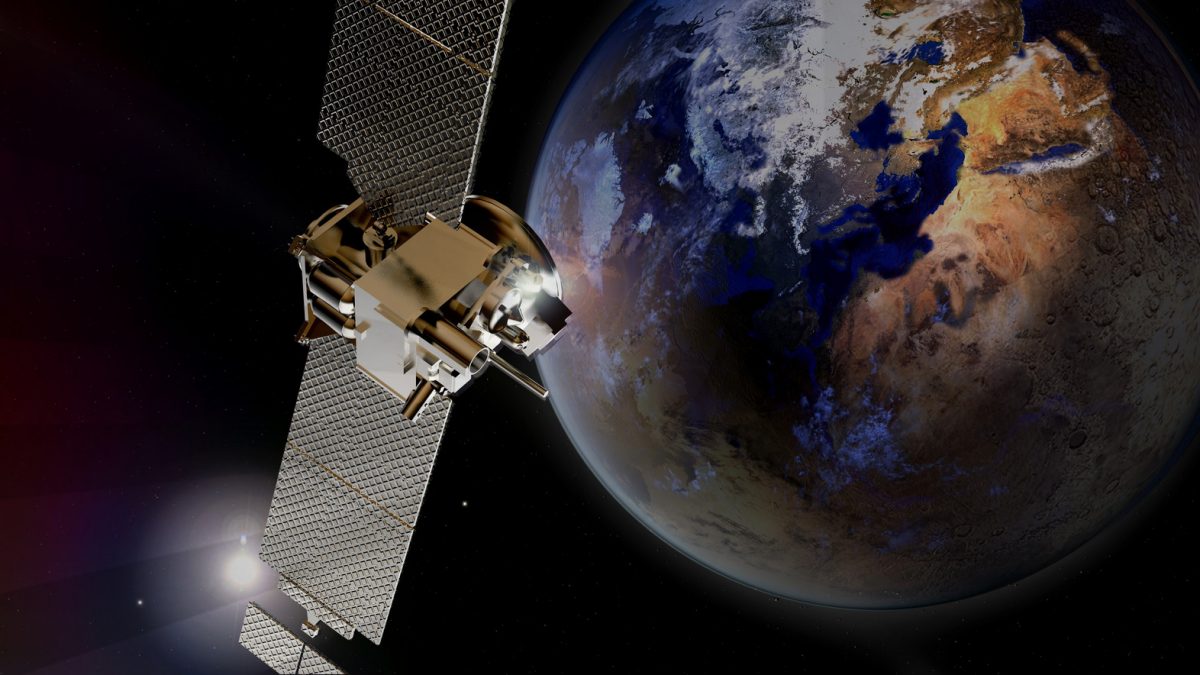Turning multispectral sensors data into information on water status and quality
In this interview with the International Water Association, Dr. Thomas Heege, managing director of EOMAP, gives an introduction about the role of EOMAP within the European Project PrimeWater and highlights the importance of multispectral and hyperspectral sensors data for water management. Under the lead of Dr. Heege, EOMAP has developed the market for space-based water analytics worldwide and initiated many ground-braking services (e.g. the first global inland-water quality survey for UNESCO).

IWA: What are the main activities carried out by EOMAP?
TH: EOMAP is delivering space-based water-related data for different aquatic sectors for more than 15 years, to environmental agencies, water-related industries and governmental organizations. We work on the practical side of these sectors, including water industries, climate industries or intergovernmental organizations. For our clients, we care about quality, maximum transparency, accuracy and customization of the provided data services. Therefore, we have been continuously improving the underlying physics-based data analytics for our services for over 25 years (even before the company was launched!), and are proud that our data analytics is the leading operational physics-based methodology in the sector.
IWA: What is the role of EOMAP within PrimeWater?
TH: EOMAP is supporting the development of the EO Science Virtual Laboratory, turning the data acquired by multispectral sensors (e.g. Landsat 8 and Sentinel-2) into information on water status and quality. We provide an operational system for different case studies in the USA, Australia and Italy with fully automatic provision of EO-derived water quality products as well as input for the modelling components in the selected case study.
IWA: What are multispectral and hyperspectral sensors on satellites? And how is the data converted into usable information?
TH: These sensors measure the light intensity in different bands, covering the visible to infrared spectrum. In other words, they measure the colour of the recorded environment. The hyperspectral is just the number of the bands, which has a characteristic and varies from satellite to satellite.
Such sensors are valuable in further generating water environment data because light penetrates only in the visible range in to the water. The secrets of the in-water properties are included in the backscattered, spectrally modified signal. Each satellite sensor has its own technical specifications (e.g. a different number of spectral bands, different sensitivity) and, if we want to generate consistent water quality measurements, the data analytics need to be automatically and physically corrected to reflect all these properties.
IWA: Could you provide some example of multispectral satellite sensors?
TH: There are several multispectral satellite sensors available, such as: MODIS and Sentinel-3 for daily coverage of large water bodies in 300 – 500m spatial resolution; Landsat 5,7,8 and Sentinel-2 in 10 – 30m resolution for much smaller lakes and rivers; or commercial high-resolution sensors such as Worldview 2/3 or Planet Doves/SkySat satellite fleets.
By combining several sensors, it is for example possible to achieve weekly monitoring, globally, of lakes less than 100m in size, or to perform historical reviews of water quality parameters going back almost 40 years.
IWA: What are the challenges? And how are they overcome?
TH: Using remote and satellite data is essentially the art of correcting for all environmental impacts on the signal. Up to 90% of the signal does not come from the water but from other sources, therefore the signal coming from the water has to be first identified.
The extreme variability of nature (caused by varying atmospheric, water surface and in-water conditions) at each individual point of the satellite image has to be corrected. This requires technology which can identify the correct signal. To benefit from the advantages of worldwide satellite-based measurements, it has to be possible to obtain consistent and independent data. This is only possible if the highest-possible level of physics-based retrieval algorithms are applied to deliver globally applicable units.
The accuracy and independency of data generated by optical satellite data depends on the data analytics. In PrimeWater, the physics-based Modular Inversion and Processing System (MIP), developed by EOMAP, is applied to the satellite imagery. This sensor-independent approach includes all the relevant processing steps to guarantee a robust, standardised and operational retrieval of water quality parameters from various satellite data sources.

IWA: How is this information being used in PrimeWater?
TH: The data sets are used for the scientific case studies embedded in the EO Virtual Lab experiments. We are performing analysis and validation with in situ measured data from field campaigns (e.g. the ones conducted in September 2020 in Mulargia) and for the assimilation with the modelling components to improve accuracy and the predictive skills of process-based models related to Harmful Algae Blooms.
Leave a Reply Cancel reply
You must be logged in to post a comment.
Categories
- Blogs (13)
- Experiments (10)
- Factsheets (1)
- Interviews (6)
- News (47)
- Newsletter (13)
- Publications (18)
- Survey (1)
- Virtual Lab (1)
- Webinar/workshops (14)


